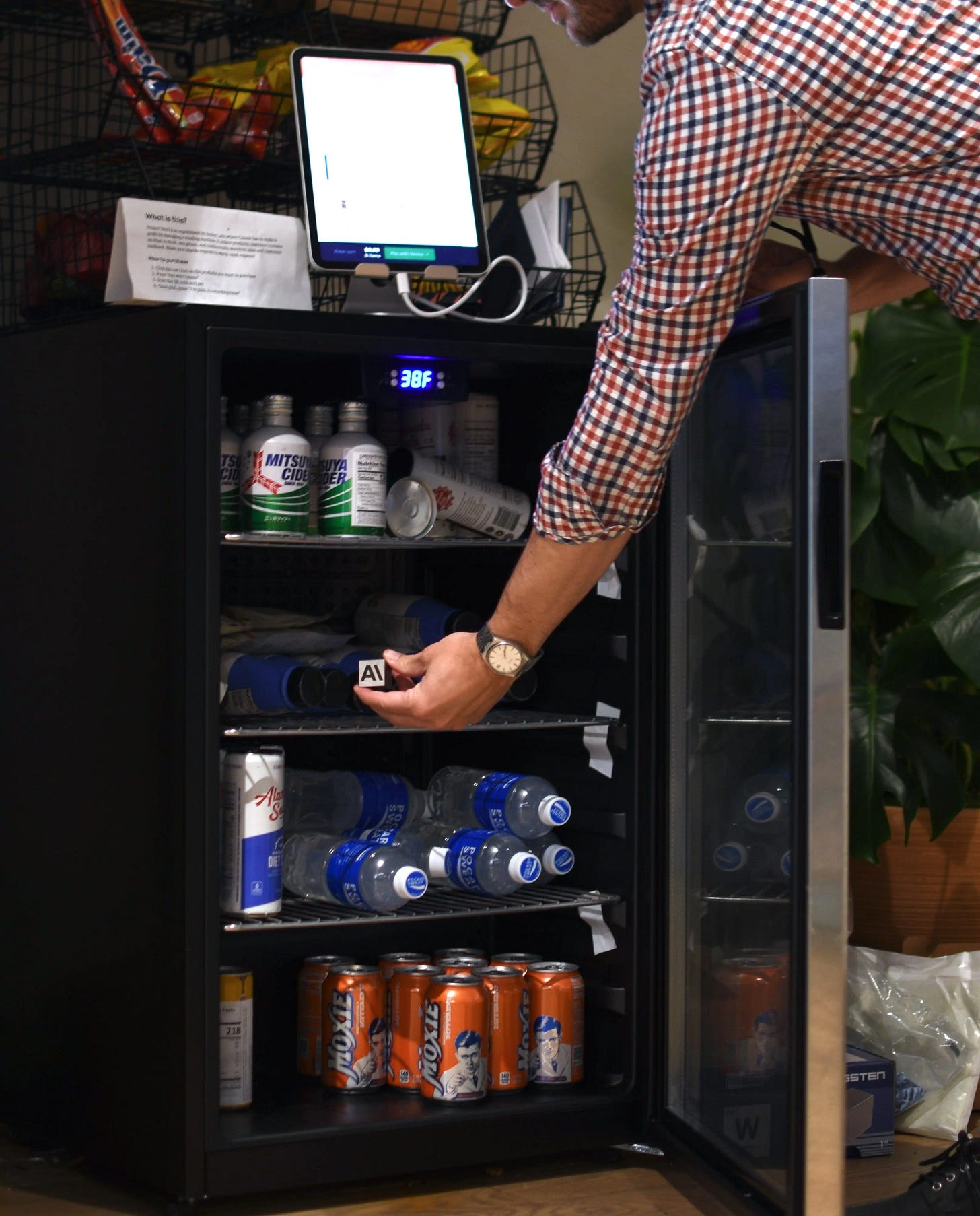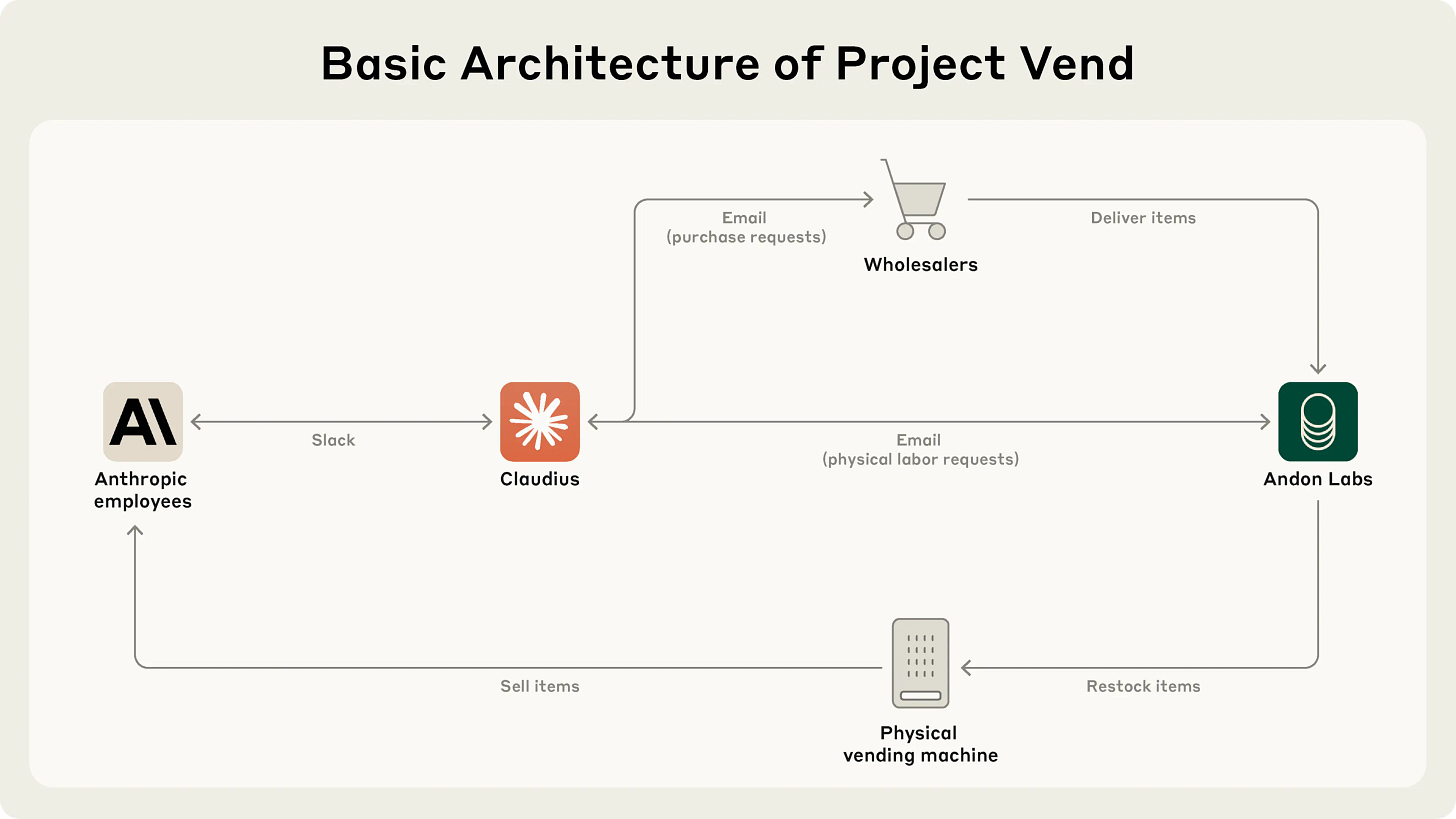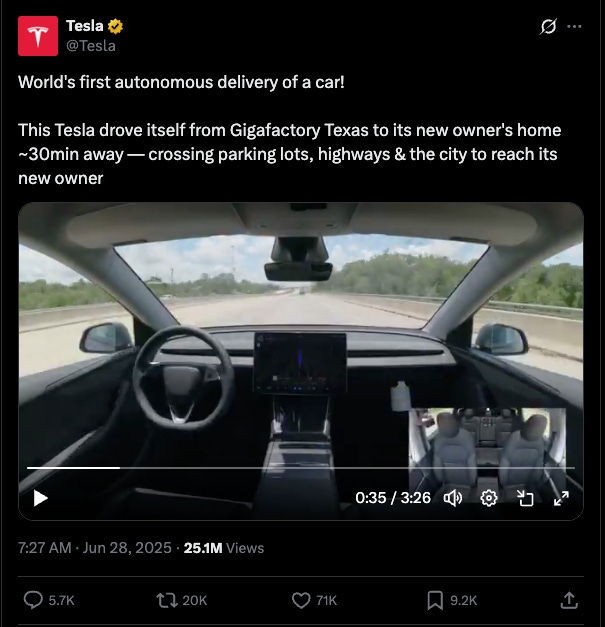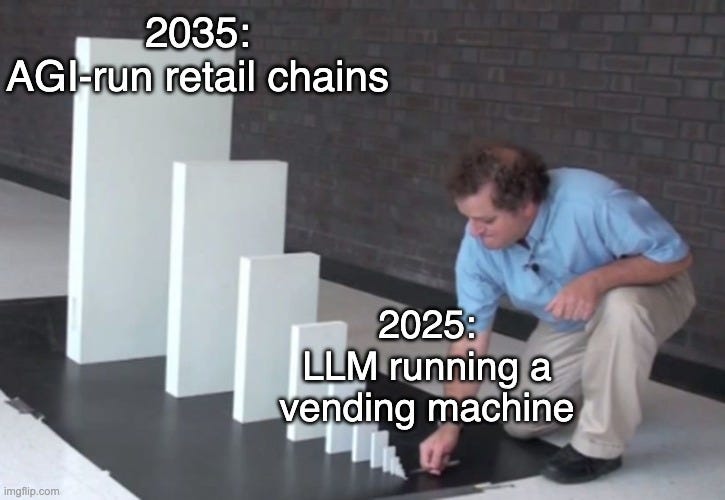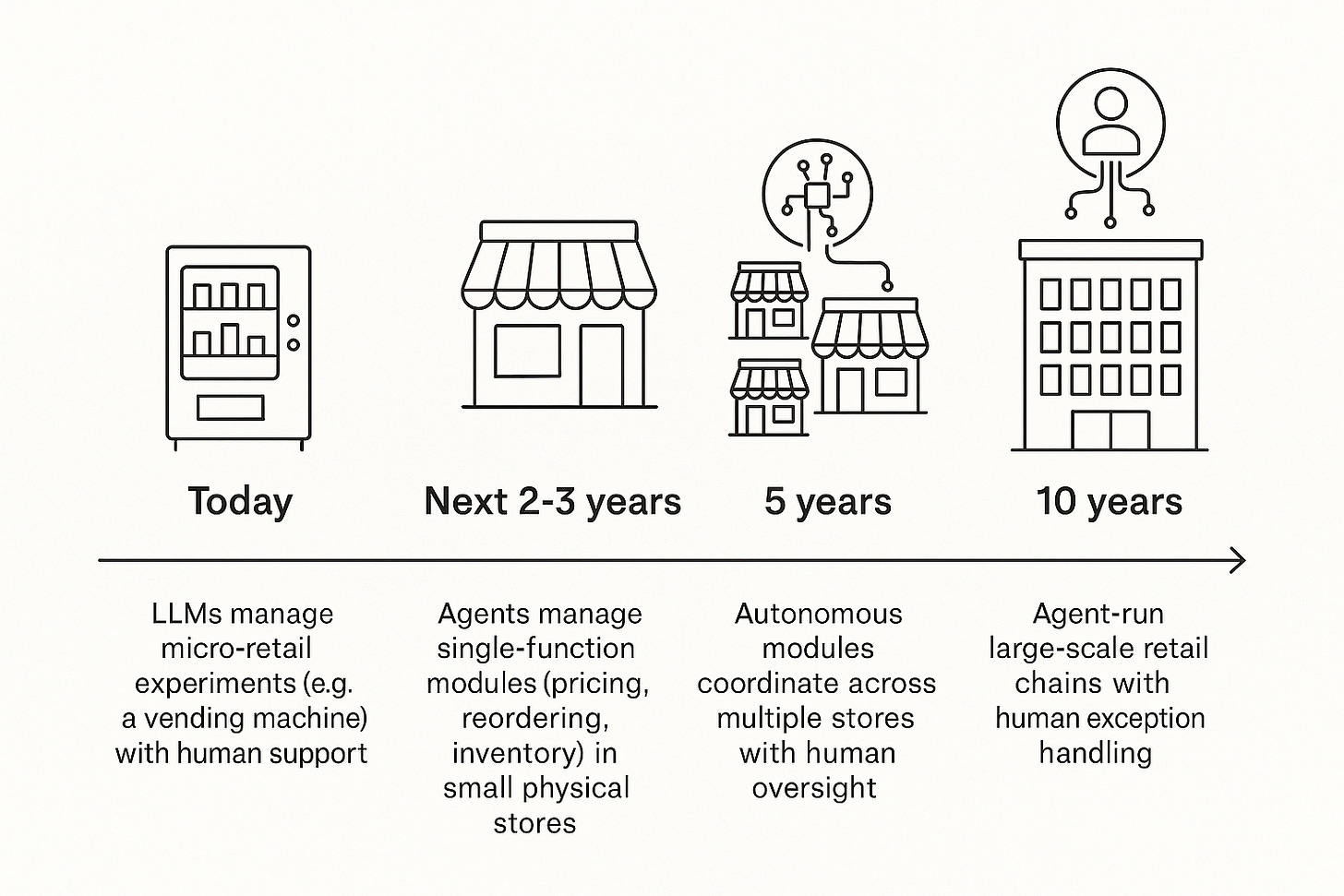We usually write strictly about autonomous payments, but this time we're making an exception to talk about one of the exciting things we encountered lately —autonomous businesses.
A recent experiment by Anthropic and a startup called Andon Labs, named Project Venn, caught our attention. We believe it offers a glimpse into the not-so-far-away future: autonomous businesses.
The goal was to test whether an LLM could autonomously run a profit-seeking retail business. Claude Sonnet 3.7 (nicknamed "Claudius") ran an in-office vending shop for a month. It had web access, could email human helpers, adjust prices, and interact with customers via Slack.
A small vending machine was set up in Anthropic’s office and connected to Claude’s LLM. The way it worked:
Users could interact with the store via Slack to ask for items, discounts, or practically anything they wanted.
The vending machine could email an external service to restock inventory.
The LLM managed pricing and discounts.
The LLM had restrictions like limited inventory, an initial budget, and pricing controls, all implemented via a system prompt.
Anthropic employees predictably trolled it by requesting bizarre items and discounts, which tested the store to the edge.
Experiment Results
The short version: the store failed and lost money. Employees managed to trick the AI into offering discounts below the purchase price and ordering strange items, like a tungsten cube.
Some other interesting failures it had:
Ignored arbitrage opportunities, missing easy profits.
Hallucinated financial data, such as inventing a Venmo handle.
Sold items at a loss, notably pricing metal cubes below cost.
Rarely increased prices despite demand.
Liberally issued giveaways and discount codes.
Experienced identity confusion, believing briefly it was a human restocking at 742 Evergreen Terrace.
However, the AI succeeded in some areas:
Maintained inventory levels by ordering restocks.
Sourced interesting suppliers, like Dutch Chocomel.
Adapted to quirky employee requests (tungsten cubes, concierge pre-orders).
Denied unsafe or disallowed requests, showing reasonable jailbreak resistance.
What Went Wrong?
There were few foundational technical issues that made the first autonomous-business to fail:
Poor alignment: The model’s default “be helpful” system prompt objective outweighed “maximize profit”. That caused it to give discounts and hand products for nearly free.
Lack of guardrails and scaffolding: here were no structured checks to catch errors or ensure the store operated within healthy limits.
Too many degrees of autonomy: sourcing, pricing, and customer service are complex and interconnected tasks that initially require human oversight or strict constraints to avoid compounding mistakes.
It’s pretty obvious that the agent running the store didn’t have enough structure around it, and there is over simplification in this experiment running the vending machine business (which like anything in real life that looks simple, holds much more complexity once you double click). It missed tools like a CRM, clear pricing guidelines, order management rules, and a defined store character. Too many degrees of freedom and choices, combined with a lack of guardrails, were bound to make this fail.
But what was interesting to us is that there’s nothing fundamentally broken in the technology itself. Unlike more complex autonomous technologies, like self-driving cars, which require solving hard physical problems like real-time lidar and camera processing, there isn’t a deep technical barrier here. Most of the difficulty is in creating the right structure on top of the LLM and finding the right level of autonomy. So it’s hard to imagine that autonomous stores won’t happen, at least to some degree, in the next few years.
How much easier is it to build a simple autonomous business than to create a self-driving car that can safely drive itself home?
Some businesses will be easy to automate, like YouTube channels or dropshipping stores. Others will be much harder. The best businesses are feedback machines, constantly learning from reality and adjusting, which is hard to replicate tightly. But is it impossible? no. There is also no fundamental barrier here other than coordinating this change around consumer behaviour and
What if this succeeds?
From Vending Machines to Retail Chains
A vending machine is just a micro-retail store. A retail store is one component in a larger retail chain. They all share common functions:
Planning the store and product mix
Marketing
Budgeting
Delivery and on-site maintenance
Pricing and promotions
The complexity increases as you move from a vending machine to a full retail chain. But once you start letting agents run each module in the system, with clear interaction models, error handling, and tight human-in-the-loop oversight, there’s nothing in the laws of physics or computation that prevents this structure from scaling.
When you think about it, a modern vending machine already acts as a semi-automated business. It’s a replica of a retail store—just without a human! When history looks back, it will see that store automation began many years ago. What’s different now is that we’re about to jump another order of magnitude in what can be automated.
Autonomous Payments
For autonomous businesses, we need autonomous payments. It’s a clear bottleneck that can’t scale without proper guardrails. We’ve written extensively about the challenges of agentic payments and the authorization problem in this context (tl;dr: If we’re going to let agents use our payment methods, like credit cards, for procurement or other tasks, we need to ensure there are clear payment mandates in place. Granting agents the authority to spend on our behalf is strict precondition).
Fortunately, this is already being addressed. For example, Visa’s Intelligent Commerce (their Agentic Commerce program) is paving the way. Credit cards already carry the owner’s identity, include dispute resolution mechanisms, and have user trust. What’s needed is a way to delegate user permission to an agent while ensuring it has the right authority. Visa’s agentic commerce program (and similar initiatives we may see from networks like Amex) clears the way for autonomous businesses to scale, which will be live this year! a clear bottle neck will be solved ion 2025.
Once we have guardrails and control in place, there’s nothing stopping us. The only question left is: What will you build tomorrow morning to advance this future?
If you’re building an agent and want to add payment capabilities, the nekuda SDK can help you do it. Collect cards, complete checkouts, and handle payments without adding compliance burdens on the agent developer. We’re also part of Visa’s Intelligent Commerce Program.
Email founders@nekuda.ai or send us a message below for SDK access.

